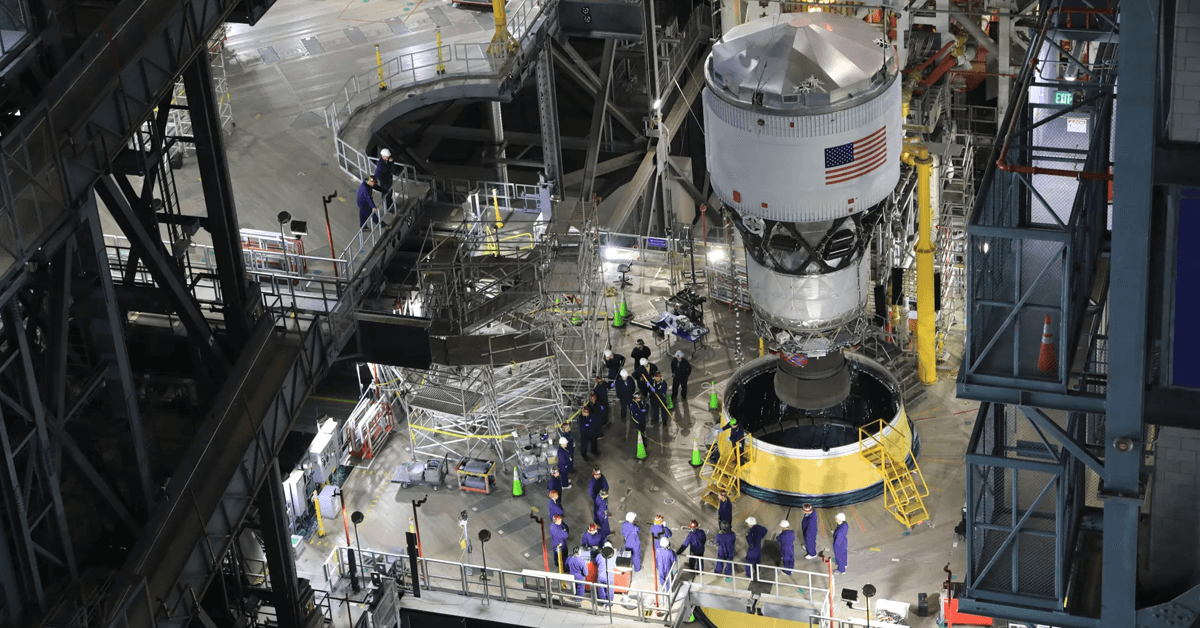NASA engineers at the Kennedy Space Center in Florida completed the integration of the Space Launch System, or SLS, rocket’s upper stage on May 1 at the Vehicle Assembly Building.
The agency said Friday the latest development brings the Artemis program one step closer to launching the Artemis II crewed test flight around the Moon.
Table of Contents
Interim Cryogenic Propulsion Stage Integration
The integration process involved the installation of the upper stage, or the interim cryogenic propulsion stage, on top of the SLS launch vehicle stage adapter by Exploration Ground Systems Program technicians. The four-story ICPS, a crucial component manufactured by Boeing and United Launch Alliance, is equipped with an RL10 engine designed to power Orion as it orbits the planet twice to propel it to the Moon. The Artemis II crew will utilize the detached upper stage as a target for a manual piloting demonstration several hours following launch.
Pre-ICPS Integration Process
In March, the SLS upper stage was delivered to Kennedy’s Multi Payload Process Facility from ULA’s Delta Operations Center. Engineers then loaded the stage with hydrazine to fuel its reaction control system.
Post-ICPS Integration Process
The SLS rocket, now equipped with the ICPS, joins previously assembled components on top of mobile launcher 1, including the solid rocket boosters, core stage and launch vehicle stage adapter. The next phase involves conducting integrated testing on the rocket elements to ensure seamless communication between all components, ground system equipment and the Launch Control Center. After this, the Orion stage adapter and spacecraft will be stacked on top of the rocket.





